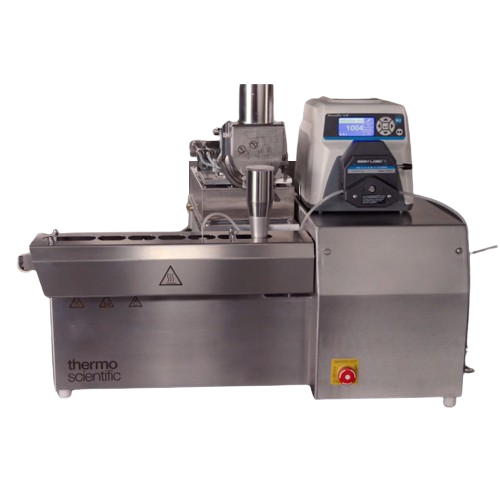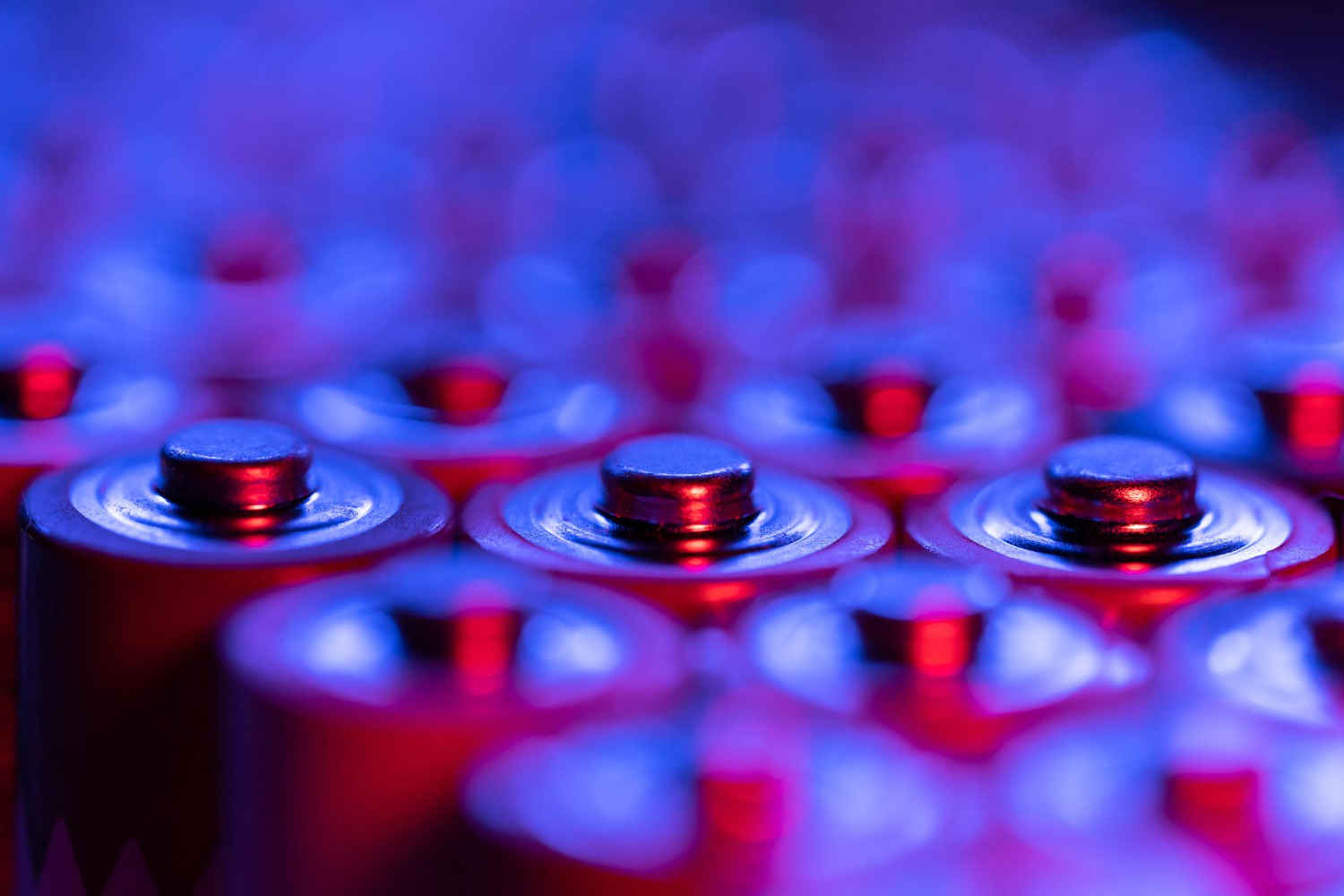Glovebox for lithium-ion battery material processing
Ensure optimum material integrity with a solution designed to maintain an ultra-pure and inert atmosphere, crucial for high-precision lithium-ion battery component processing.

Processes Battery Materials in Controlled Atmosphere
The Energy 11 PROTECT Glovebox Solution from Thermo Scientific sets itself apart as an integrated system for precise battery material processing. It combines a robust twin-screw extruder with a meticulously controlled argon atmosphere, ensuring less than 1ppm of O2 and H2O for optimal material preservation. This unique setup is essential for producing high-quality components such as lithium-ion and solid-state battery cells, including cathodes, anodes, and separator films. Its working principle revolves around high dispersive and distributive mixing, with continuous processing to eliminate batch variations. The system operates under a PLC-controlled mechanism offering customization of feed options for solids and liquids, enhancing operational flexibility. All contact parts can be swiftly disassembled for thorough cleaning, reducing downtime and cross-contamination risks. With the optional nitrogen removal and solvent filtration, the glovebox maintains an ideal environment for sensitive battery materials, ensuring consistent and efficient production.
Benefits
- Enhances battery performance with precise inert atmosphere control, critical for sensitive materials.
- Ensures product consistency through continuous processing, eliminating batch-to-batch variations.
- Facilitates rapid material handling adjustments, increasing operational flexibility and efficiency.
- Minimizes cross-contamination risk with easy disassembly and thorough cleaning of extruder parts.
- Supports environmental standards with optional nitrogen and solvent filtration systems.
- Applications
- Battery materials, Solid-state batteries, Electrolytes, Electrode slurry, Lithium-ion batteries, Cathode and anode slurries, Batteries, Separator films, Lithium anodes
- End products
- Graphite anodes, Lithium iron phosphate (lifepo4) cathodes, Lithium metal anodes, Nmp-filtered electrode slurries, Lithium-ion electrolytes, Nickel manganese cobalt (nmc) cathodes, Solid-state battery cells, Lithium-ion battery cells, Battery separator membranes
- Steps before
- Purification, Drying, Materials preparation, Component weighing
- Steps after
- Sterilization, Homogenization, Packaging, Quality control
- Input ingredients
- lithium-ion battery materials, solid-state battery materials, cathode slurries, anode slurries, electrolytes, pure lithium anodes, separator film materials, lithium-ion electrode slurry, solid materials, liquid materials
- Output ingredients
- solid-state battery components, lithium anodes, separator films, mixed lithium-ion electrode slurries, dry electrodes, homogeneous final product, solvent reduced cathodes
- Market info
- Thermo Fisher Scientific is renowned for providing innovative scientific instruments, laboratory equipment, and engineered-to-order solutions across various industries, esteemed for their high-quality products and expertise in life sciences, pharmaceuticals, and biotechnology sectors.
- Product Type
- Glove Box
- Amperage
- 16
- Dimensions (L x W x H)
- 320 x 140 x 240 cm
- Voltage
- 400 V
- Atmosphere Control
- Argon with < 1 ppm O2 and < 1 ppm H2O
- Pressure
- 1-10 mbar overpressure
- Nitrogen Removal
- < 1 ppm N2
- Compatibility
- Lithium-ion battery materials
- Atmosphere control
- Argon with < 1ppm O2, < 1ppm H2O
- Batch vs. continuous operation
- Continuous process
- Automation level
- Control panel-controlled
- Atmosphere pressure control
- 1-10 mbar overpressure
- Cleaning method
- Completely disassemblable for manual cleaning
- Machine footprint
- 320 x 140 x 240 cm
- Discharge method
- Integrated twin-screw extrusion
- Compact footprint
- No
- Control panel type
- Extruder’s control panel
- Control panel type
- Integrated extruder control panel
- Disassembly options
- Complete and quick disassembly
- Feeding options
- Range of feeding options for solid and liquid materials


